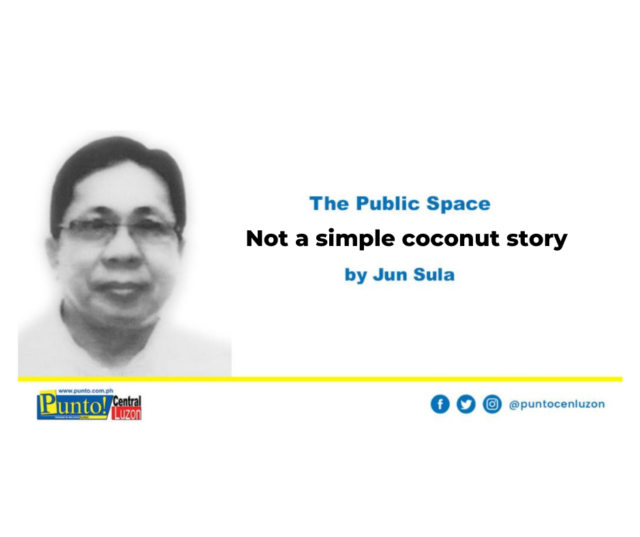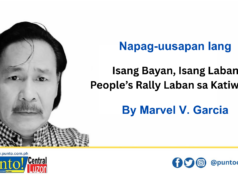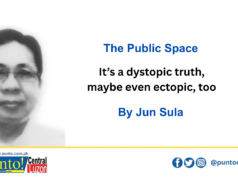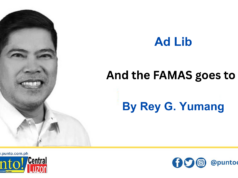Towards the end of martial law, when the power of the Marcos regime was ebbing, various coconut related issues from sovereign loans to coco levy began to surface. It felt at the time that Malacanang was starting to lose its grip, especially on the judiciary. Or so it seemed.
At one point, an employee of the coconut farmers’ organization known as COCOFED was assigned to handle a case that was brought to the Supreme Court on how coconut funds were used or misused, as the case maybe. The employee had just passed the bar and was among the top-notchers. He became the easy and logical choice for the job.
As the newly-minted lawyer recounted, he was interrogated by then Supreme Court Chief Justice Enrique Fernando. Fernando had earned his one-minute fame when he was photographed holding an umbrella for then First Lady Imelda Marcos. It was symbolic not only of the chief justice’s public chivalry but as well as of the immense influence, even power, the First Lady wielded.
Fernando asked the lawyer. “ Why did you give P20 million for the building of the coconut palace?,” he grilled the COCOFED lawyer. The coconut palace was among the landmark projects of the First Lady at the Manila Bay reclamation area along with the Philippine International Convention Center and the Folk Arts Theatre.
“Who can say no to the First Lady?”, the lawyer quickly answered, perhaps with the umbrella photo at the back of his mind. “ And you think that’s a valid, legal argument?,” Fernando snapped back at the lawyer’s jugular view of reality.
Last week, the SC dismissed a graft case versus former Senate President and now Presidential Legal Counsel Juan Ponce Enrile and others for violation of their constitutional right to speedy trial. The case for alleged misused of coco levy amounting to more P840 million was filed in 1990 by the Presidential Commission on Good Government (PCGG) before the anti-graft body, the Office of the Ombudsman.
The High Tribunal based its ruling on two factors. One factor is that four of the accused had already died. The other was the Mona Lisa doctrine:it just lies there, and it dies there. Were the four still alive, the doctrine would have been the common factor applied. The inordinate delay violated the accused of their right, the decision said. More than 32 years, and the Ombudsman was like Ripley who fell asleep for 20 years.
The controversial coco levy was born out of a natural cause that triggered other crises from social to political and then legal, the graft case. The waters of the Pacific Ocean near Peru became warmer. The anchovies which thrived in the Peruvian area then moved to a cooler part of the ocean. Anchovies were Peru’s important export products, vital in animal feeds production worldwide. The shortage of anchovies triggered demand, and therefore, higher price for plant oil, like coconut.
It was the best of times for coconut farmers. The windfall was so unprecedented that Enrile, who was then the chairman of the Philippine Coconut Authority, apart from his hat as defense secretary, was so ecstatic that, in a broadcasters’ forum in Zamboanga City, he was a little in over his head. Covering his microphone with his palm, he asked that the others be muted,too. “ If the OPEC can impose a cartel on their petroleum oil, we can also imposed our own with our coconut oil,” he bluntly said with characteristic cockiness of a man in power. Everyone applauded his suggestion, except those who understood how the market works: coconut oil has substitutes like soybean and palm oil, so a cartel is impossible. Of course, it was not implemented.
It was also the worst of times. Prices for basic commodities like cooking oil, soap and other goods that used oil had gone up. The coconut industry was told to do its part in dealing with the problem. Otherwise, so the late Jose “Pepot” Eleazar, Jr, COCOFEtD executive director, along with other industry leaders, recalled, the military will be ordered by Marcos Sr. to take over an industry that,at the time, was directly and indirectly supporting a third of the Filipino people. Meaning, roughly 12 of the 36 million nincompoops, according to an American senator, led by an SOB.
A compromise was arrived at: a coco levy fund would be raised from coco exports earnings, part of it would subsidize coco-based household goods. In time, the fund grew to nearly P100 million,and a bank for coconut farmers could be purchased already. It turned out that a commercial bank was for sale, but with one condition: the bank would be managed for five years by Danding Conjuangco. The United Coconut Planters bank was born, with another rumored collatilla: shares of stock worth of the new bank P77,777 would be named to a high official whose favorite number was seven.
But debates continued as to the character of the levy: was it public or was it private? Eleazar tested his own staff on the issue: did the money come out of the farmers’ pocket? If it did, it was private. Otherwise, it was public. Obviously, it was public because it was, in fact, in the form of a tax. The debate ended on the court were it was, finally,settled. Some say, one way or the other.
A long time ago, the United States imposed an excise tax on coco oil imports from the Philippines. The former colonial power eventually returned the amount it collected to the Philippine government. On one condition: it should never be plowed back to the coconut industry but used for something other than what sounded nuts. Quezon City rose from that colonial tax.
The coconut tree is oftentimes described as the tree of life because of its many uses, from roots to the leaves and fruits. A certain myth even believed it was the same forbidden fruit Eve and Adam, in that order, took a bite from in Genesis. The latest SC decision on the graft charges versus Enrile et al has disabused the notion that they were guilty of biting off from the forbidden fruit.
More clearly, it shows that the dispensation of justice in this land of the coconuts is not as efficient as Justice Secretary Crispin Remulla is convincing the International Criminal Court it is. Cross his heart.




